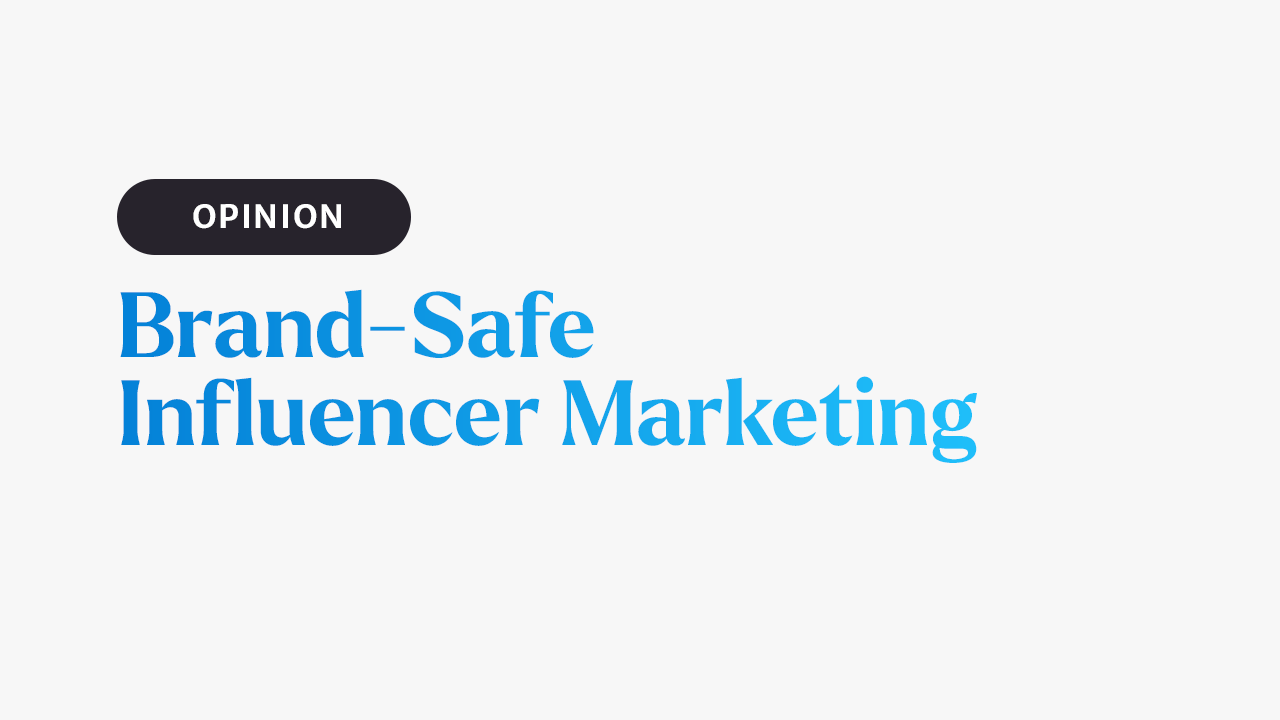The authentic connection that creators maintain with their followers is what lends them the power to convert their fans into fans of a brand. But that freedom also comes with the risk that the creator could post hateful, polarising, or simply off-brand content. The challenge for marketers is harnessing influencer creativity without exposing themselves to content that undermines their brand.
Sometimes, influencers have a long history of the kind of remarks with which a brand would not want to be associated. For example, the influencer Andrew Tate was banned from Facebook, Instagram, and TikTok this summer over misogynistic remarks. But 2022 was hardly the first time Tate had made such comments; his public history of misogyny dated back to at least 2017.
Other times, vetting influencers for brand-unsafe content is much harder. The creator may not have a long track record, their problematic posts may be hidden, or they may not be controversial but are simply not a strong fit for the brand. By conducting an influencer audit, developing a chart of expected behaviours, and educating the creator on brand values, brands can capitalise on creators’ influence while minimising risk.
Do your research before hiring an influencer
There are two ways most brands identify influencers. The quick way is like window shopping — choosing influencers who are trending or otherwise popular. The proper way is to do a deep dive to understand why the influencer is popular, whether their audience aligns with the brand’s audience, what they tend to post about and whether those topics jibe with the brand.
If the creator commands influence because they are a celebrity (often from sports or entertainment), they will likely be a fit for top-of-funnel campaigns that aim to boost awareness by associating the brand with the figure. Plus, if an influencer has been in the public eye, the risk is generally lower, as problematic behaviours are likely public knowledge.
Brands who want to use influencers to go deeper in the funnel — to show the specific strengths of their products, for example — will want to partner with content creators who are not just relevant to their brand but deeply immersed in their products or industry. But these influencers require deeper scrutiny, as the brand doesn’t know upfront what they posted before amassing an audience.
For any creator but especially those who got famous by creating content, brands should deploy tools that enable them to conduct brand safety audits. Create lists of influencers, and search their histories for keywords to see if they have participated in problematic conversations. The audit doesn’t just apply to controversial statements; it can also help brands discover whether the influencer has ever worked with a competitor or mentioned the brand in an unflattering light.
Finally, the degree of association between a brand and influencer affects the level of scrutiny brands should apply to the partnership. There is a difference between asking an influencer to act as a brand ambassador, paying someone to create content, and sending a free product for public review. A deeper association requires more scrutiny.
Develop a simple chart of expected behaviours
Brands cannot control a creator’s past; even creators they vet and choose to hire may not, on paper, be flawless brand ambassadors. But they can shape the future. One crucial step is to create a simple chart of expected behaviours to hold the influencer accountable for possible brand-unsafe activities and guide them toward the steps that will foster a successful partnership.
For example, brands may wish to ban certain kinds of political commentary or define what they consider hateful content. A brand that considers itself especially wholesome or family-friendly may wish to discourage sexually suggestive content. But each brand must define its own standards. For example, while many brands may discourage strong political stances on controversial issues, vocally political brands like Ben & Jerry’s and Patagonia would likely take a different tack.
Brands should include these guidelines in a contract. Guidelines should be comprehensible and accessible. Burying them in clause forty-seven or in complex jargon will not lay the foundation for success.
Brands should think of influencers and creators like publishers. They cannot control all the content the influencer produces or the influencer’s behaviour outside the scope of their partnership. But they can evaluate the creator’s overall presence to determine whether they want to be associated with it.
Immerse the influencer in the brand
Once a brand has vetted an influencer and set guidelines, it should immerse the influencer in its culture and product. To do this, brands often hold workshops with influencers, have them spend time at the brand’s office or factories, and allow them to experience the product with VIP levels of access. The influencer is representing the company, so they should feel like they are a part of it.
Even smaller influencers should go through onboarding systems where they sit with the client, ask questions, and learn about the brand. Marketers should always meet influencers with whom they intend to partner to get a sense of who they are as a person and gauge their professionalism. A face-to-face meeting eliminates many of the blindspots of scrolling through a creator’s social feeds.
Immersing an influencer in the brand is not just a question of social values or controversial statements. For example, Microsoft engaged Oprah Winfrey in 2012 to promote its competitor to Apple’s iPad, the MS Surface. Oprah widely promoted the Surface — including in a tweet that said, “via Twitter for iPad.” By engaging a celebrity who was not immersed in its products and may not have been especially tech-savvy, Microsoft exposed itself to an embarrassing public moment.
Most influencer controversies are avoidable if brands devote time to choosing creators and celebrities who truly love their products and have histories that suggest their values and interests align with the companies. By going beyond window shopping, marketers can capitalize on a creator’s influence while avoiding an adverse scenario, whether of the more nefarious Andrew Tate or almost comic Oprah-Microsoft variety.








